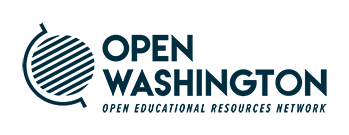Module 3: Understanding OER
Module 3: Understanding OER
We will start the lesson discussing what open educational resources are. Please watch the video first and read through the content. It is important to understand the concept of open educational resources as it will be the base for the rest of the modules.
What (on earth) are “OPEN” educational resources?
Password- OER-HD (with Caption) from OpenWa on Vimeo, CC-BY
Have you ever found something from the internet that could be a perfect resource (image, video, quiz, etc.) for your course, and you spent hours trying to figure out the copyright issues with that resource? You couldn’t find any Terms of Use, and there was no author information, so you didn’t know who to contact to get the permission?
Wouldn’t it have been nice if that resource somehow said “I’m free to use, no strings attached, you don’t need to ask for my permission because it is already granted”?
Open Educational Resources (OER) are an answer to that need.
There are millions of educational resources out there that are available for others to freely use. There are all kinds: full courses, course materials, modules, textbooks, streaming videos, tests, software, and many other tools, materials and techniques used to support access to knowledge.
Here is how OER is defined in more specific and fancy terms:
Open educational resources (OER) are educational materials that reside in the public domain or have been released under an open license that permits their free use and re-purposing by others (definition by Hewlett Foundation).
To put it another way. OER meet these criteria in:
- Format: materials in any medium, digital or otherwise
- Conditions: that either
- reside in the public domain or
- have been released under an open license,
- Nature: permits its free use and re-purposing by others.
To see how others define OER, please visit What is OER by Creative Commons.
Now that we’ve had a chance to discuss the concept of OER let’s dig a bit deeper. We’ve just learned that, in order to be an OER, the resource should be either in the public domain or released with an open license. Let’s talk about what the open license and public domain mean in the next Modules.
